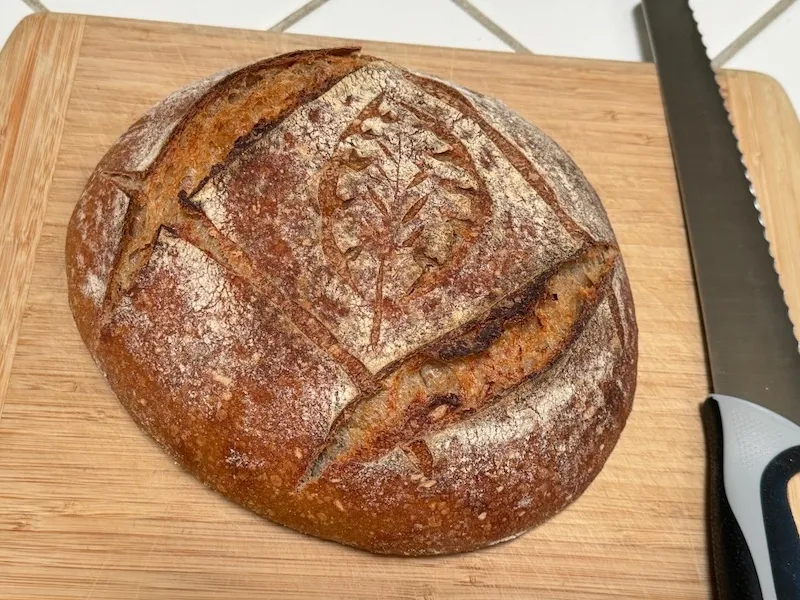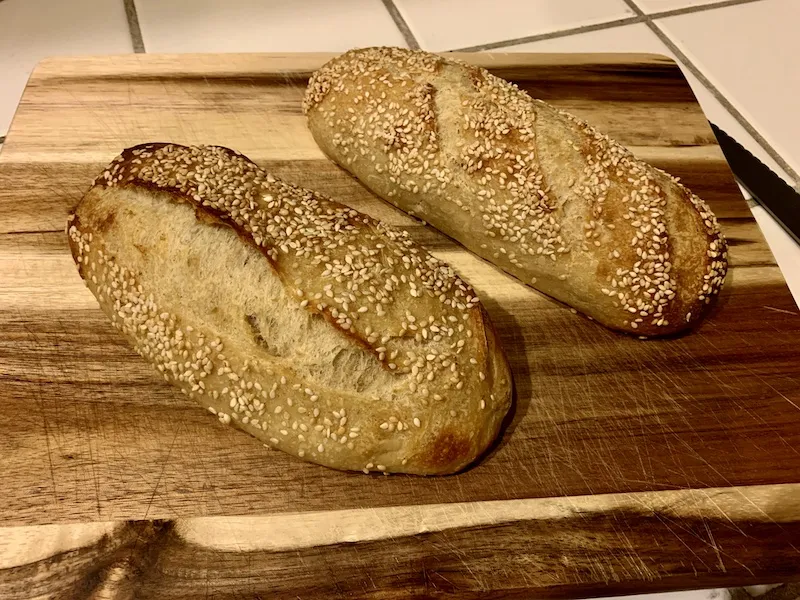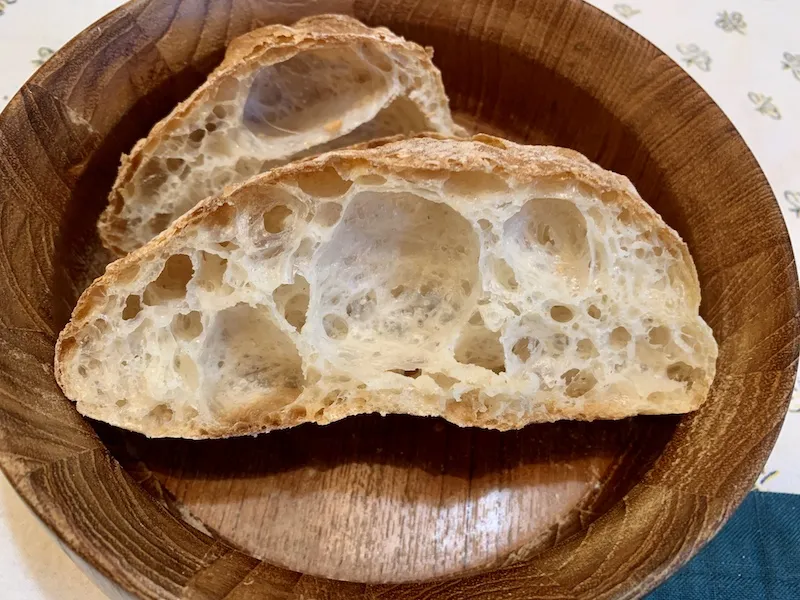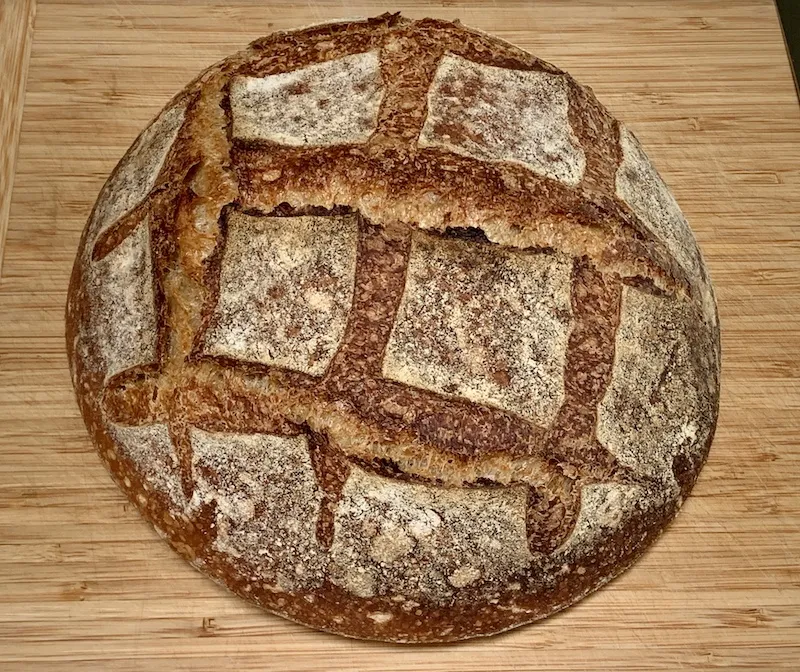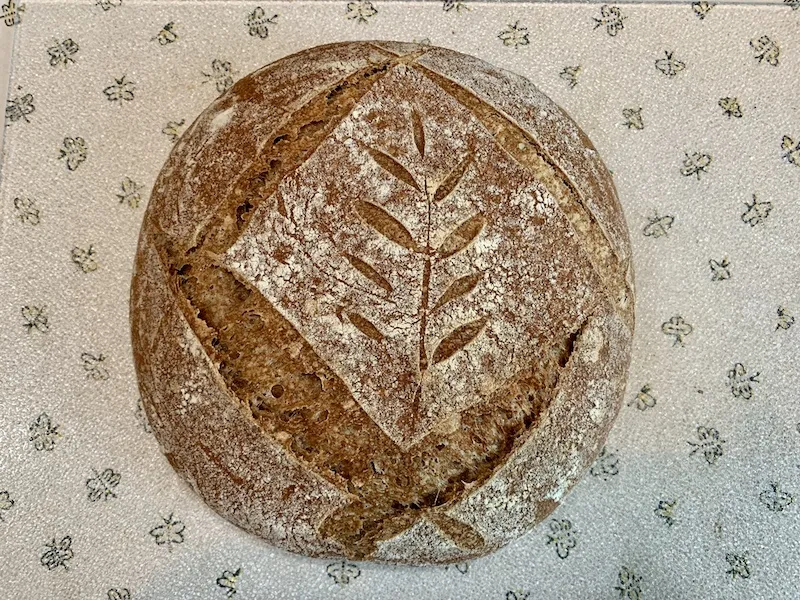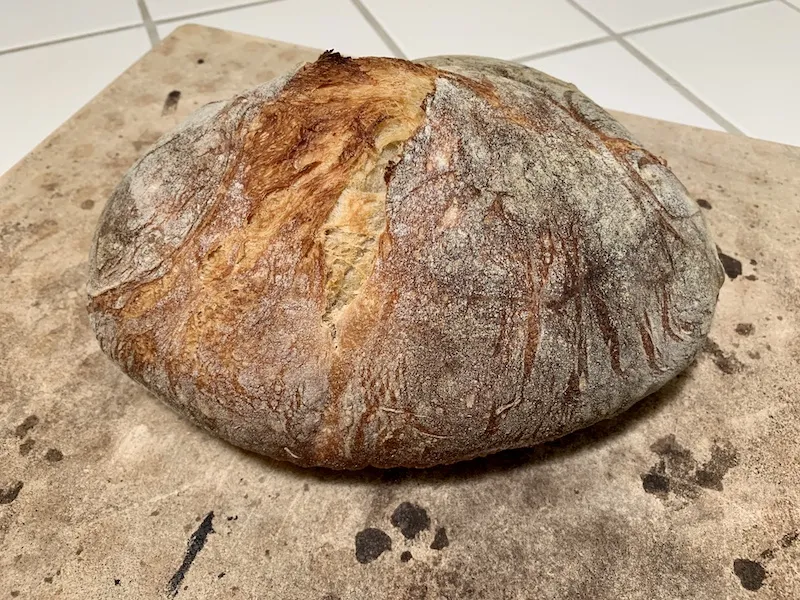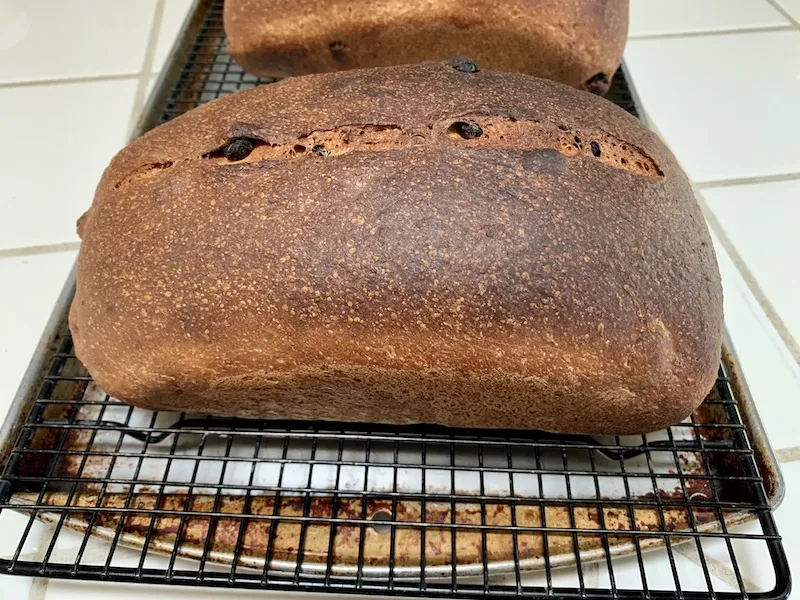Sourdough Seeded Loaf Pan Bread
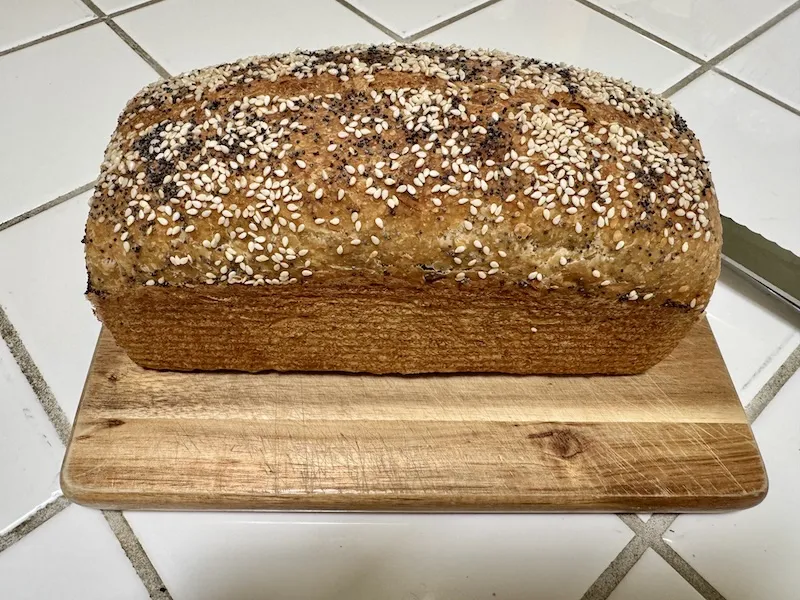
I ran across the recipe for this bread on facebook. It is supposed to be a clone of "Dave's Seeded Killer Bread." I have heard and read about how good various Dave's Killer Breads are. Although I have never personally tried any of them, this recipe looked similar to Hamelman's "Five Grain Levain," which I like a lot, so it seemed worth trying. It is really, really good and might well get into my regular rotation.
